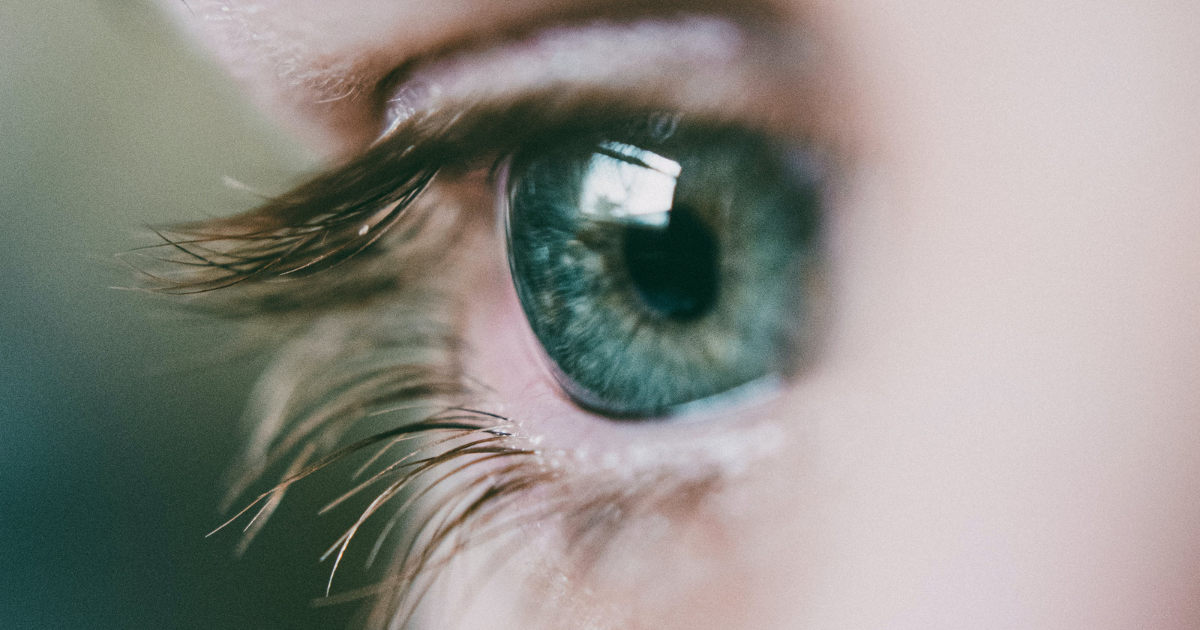From Myth to Medicine: The Timeless Saga of Eye Floaters

Read time: 5 minutes
Eye floaters - those drifting specks, cobwebs, or translucent threads that glide across your field of vision - are a common yet curious visual phenomenon. Often appearing most clearly when looking at a bright, uniform background like a blue sky or white wall, floaters have sparked centuries of speculation, mythology, art, and scientific investigation. But what exactly are they? Where do they come from, and how has our understanding evolved from ancient lore to modern medicine?
In this article, we’ll explore the biological basis of eye floaters, trace their presence through history, and examine the treatment options available today for those whose floaters interfere with daily life.
What Are Eye Floaters?
Medically referred to as vitreous opacities, floaters are small particles or irregularities suspended within the vitreous humor - the clear, gel-like substance that fills the inside of the eyeball between the lens and the retina. The vitreous helps maintain the eye’s shape and optical clarity, but over time, it undergoes changes that can lead to floaters.
As we age, the vitreous begins to liquefy and shrink, a process known as vitreous syneresis. This can cause collagen fibers and microscopic clumps of gel to form within the vitreous. These clumps cast shadows on the retina, which we perceive as floaters. They appear to move when we move our eyes, seeming to dart away when we try to look at them directly.
Floaters can vary in shape, size, and density. Some people describe them as:
- Gray or black specks
- Semi-transparent strands or strings
- Cobweb-like patterns
- Ring-shaped or amorphous clouds
While age-related changes are the most common cause, floaters can also be triggered or worsened by:
- Eye trauma or surgery
- Posterior Vitreous Detachment (PVD)
- Inflammation inside the eye (uveitis)
- Hemorrhaging into the vitreous from blood vessel leakage
- Retinal tears or detachment, which require urgent medical attention
Ancient Observations: Myths, Metaphors, and Early Medicine
The phenomenon of floaters has been documented for thousands of years. Ancient civilizations recognized these visual anomalies long before the advent of modern ophthalmology.
In ancient Greek and Roman times, floaters were referred to as muscae volitantes, or “flying flies” - a reference to their erratic movement and elusive appearance. These visions were sometimes thought to be spiritual or supernatural, even interpreted as omens or messages from divine realms.
In Ayurvedic texts from ancient India, floaters were described in relation to "black insects" seen in front of the eyes, and early healers documented methods for balancing the body’s humors to address visual disturbances.
Despite their mystical interpretations, these early observations demonstrate how acutely people noticed and tried to make sense of floaters, long before there was a scientific framework for doing so.
Renaissance Perspectives: Art Meets Anatomy
The Renaissance marked a turning point in the study of human anatomy and vision. Artists and scientists alike became fascinated with the mechanics of sight.
Leonardo da Vinci sketched intricate anatomical studies of the human eye, noting not only its structure but also the subjective experience of vision. His work hinted at an awareness of floaters, though their origin remained unknown.
Meanwhile, astronomer and mathematician Johannes Kepler made significant strides in optics and visual science. He theorized that imperfections in the eye could be responsible for certain visual effects - laying the groundwork for more focused scientific inquiry into floaters and other visual artifacts.
Modern Science Illuminates the Shadows
It wasn’t until the 19th and 20th centuries that researchers gained a clearer understanding of floaters’ biological basis. The invention of the ophthalmoscope allowed doctors to directly observe the vitreous and retina, providing visual confirmation of what had previously been a mysterious internal experience.
Today, floaters are well understood as a normal part of the aging eye. Posterior vitreous detachment (PVD) - a common condition in people over 50 - is often responsible for a sudden increase in floaters. As the vitreous detaches from the retina, it can tug on retinal tissue or release small particles that become floaters.
In rare cases, a sudden onset of floaters, especially when accompanied by flashes of light or a curtain - like shadow in peripheral vision, may indicate a retinal tear or detachment - a serious condition requiring immediate evaluation by an eye care professional.
Treatment Options: When Floaters Become a Daily Nuisance
For many, floaters are a minor annoyance that the brain gradually learns to ignore. But for others, particularly when floaters are large, numerous, or obstructive, they can interfere with reading, driving, or computer use.
Treatment options include:
- Observation: In most cases, floaters are harmless and fade over time. Patients are advised to monitor symptoms and return for regular eye exams to rule out any retinal complications.
- Laser Vitreolysis: This outpatient procedure uses a YAG laser to vaporize larger floaters into smaller, less visible fragments. It's typically performed on patients with clearly defined, isolated floaters and offers mixed results. Not all floaters are suitable for this treatment, and risks include temporary increases in eye pressure or inflammation.
- Vitrectomy: A more invasive surgical option, vitrectomy involves removing the vitreous gel entirely and replacing it with a saline solution. While highly effective at eliminating floaters, this procedure carries greater risks, including retinal detachment, cataracts, and infection. It's usually reserved for severe, vision-impairing cases.
The Takeaway
From ancient myths and metaphors to the precision of modern laser surgery, the story of eye floaters reflects the broader arc of human curiosity and scientific progress. What was once considered supernatural is now understood through the lens of anatomy, physics, and clinical research.
Floaters, though often benign, are a vivid reminder of the complexity of the human eye. For those experiencing sudden changes in floaters or accompanying symptoms like flashes of light or vision loss, seeking prompt care is essential.
As our knowledge and technology continue to evolve, so too does our ability to manage these tiny intruders - transforming visual interference into opportunities for deeper understanding and innovative treatment.
If you’ve noticed new or worsening floaters, especially if accompanied by flashes or vision loss, it’s important to
schedule a comprehensive eye exam. At Urban Optiks Optometry, we use advanced diagnostic tools to evaluate your retina and vitreous health, ensuring your vision is thoroughly protected.
Share this blog post on social or with a friend:
The information provided in this article is intended for general knowledge and educational purposes only and should not be construed as medical advice. It is strongly recommended to consult with an eye care professional for personalized recommendations and guidance regarding your individual needs and eye health concerns.
All of Urban Optiks Optometry's blog posts and articles contain information carefully curated from openly sourced materials available in the public domain. We strive to ensure the accuracy and relevance of the information provided. For a comprehensive understanding of our practices and to read our full disclosure statement, please click here.


















